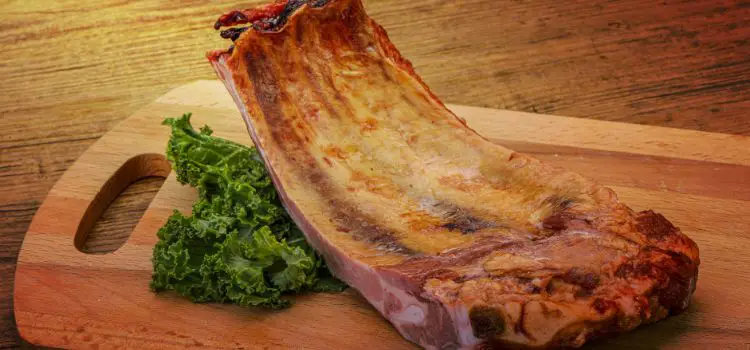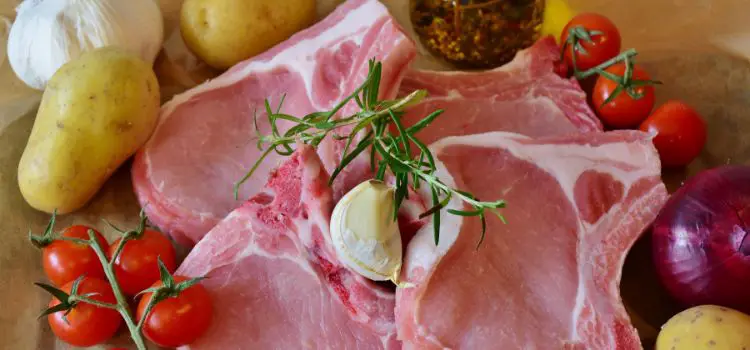As an Amazon Associate, I earn from qualifying purchases

Reheating prime rib can be a culinary challenge. This premium cut of meat is prized for its tenderness and rich flavor, qualities that can be compromised if not handled with care during reheating. The traditional methods of reheating often result in overcooked and dry meat, losing the essence of what makes prime rib so special. This is where sous vide comes into play, offering a solution that maintains the integrity of the meat.
Sous vide, a French term meaning “under vacuum,” involves sealing food in a bag and cooking it in water at a precise temperature. This method is renowned for its ability to achieve perfect doneness while preserving moisture and flavor. When it comes to reheating, sous vide offers unparalleled precision, allowing you to warm the prime rib evenly without cooking it further. The result is a reheated prime rib that maintains its original juiciness and taste, making it an ideal choice for this task.
The sous vide reheating process for prime rib involves a few straightforward steps which, once mastered, will ensure your prime rib remains a centerpiece of any meal, even when reheated.
Preparing the Prime Rib for Reheating
Proper preparation is crucial before you begin the sous vide reheating process. Start by ensuring your prime rib is stored correctly post-cooking. If you have leftovers, wrap them tightly in plastic wrap or foil and refrigerate promptly. For those planning to reheat soon, bring the prime rib to room temperature before proceeding, as this helps in achieving even reheating.
Vacuum sealing is a pivotal step. If your prime rib isn’t already vacuum-sealed, do so before reheating to prevent moisture loss. The vacuum-sealed environment reduces air exposure, preserving the meat’s texture and flavor. If a vacuum sealer isn’t available, using airtight freezer bags can be a suitable alternative. Just ensure you remove as much air as possible before sealing.
Enhancing flavor is an optional but enjoyable step. Consider adding a pat of butter or a sprinkle of your favorite herbs into the bag before sealing. This infusion of flavor can elevate the taste profile of your prime rib, making the reheating process even more rewarding.
Step-by-Step Instructions for the Sous Vide Reheating Process
- Set Up Your Equipment: Begin by filling your sous vide container with water and attaching your sous vide immersion circulator. Set the temperature to between 130°F and 140°F. This range will gently reheat your prime rib without cooking it further, ensuring it remains juicy and tender.
- Prepare the Prime Rib: If the prime rib is in the fridge, allow it to sit at room temperature for about 30 minutes. Place the vacuum-sealed prime rib in the water bath once the water has reached the desired temperature.
- Reheating Time: The reheating time will vary based on the thickness and initial temperature of your prime rib. As a general guideline, allow about 45 minutes to an hour for reheating. For thicker cuts or those taken straight from the fridge, add an additional 15 to 30 minutes to the reheating time. This ensures the meat is warmed through consistently.
- Monitor and Adjust: Check the water level occasionally, ensuring the prime rib remains fully submerged. Adjust the temperature if necessary, but avoid opening the bag.
Tips for Achieving the Best Texture and Flavor

Once the reheating process is complete, it’s time to focus on the finishing touches that will make your prime rib even more delectable.
- Searing the Prime Rib: To achieve a beautiful crust, quickly sear the reheated prime rib in a hot pan with a bit of oil. This step not only enhances the texture but also adds a layer of flavor through the Maillard reaction, which develops when the meat is browned.
- Seasoning: If needed, adjust the seasoning after reheating. A sprinkle of salt and pepper can highlight the meat’s natural flavors. You might also consider adding a dash of garlic powder or fresh herbs to complement the prime rib.
- Accompaniments: Pair your reheated prime rib with sides that enhance its rich profile. Traditional options like horseradish sauce, au jus, or a simple herb butter can elevate the dish. Light sides such as roasted vegetables or a fresh salad provide balance, allowing the prime rib to shine as the meal’s star.
Conclusion
Reheating prime rib using sous vide is a game-changer, offering a method that preserves the meat’s delicate balance of flavor and texture. By following the outlined steps and tips, you can ensure your reheated prime rib remains as succulent and flavorful as when it was first cooked. Sous vide not only simplifies the process but also enhances the overall dining experience.
Experimentation is encouraged—try different herbs and flavor infusions to tailor the prime rib to your taste preferences. For those passionate about sous vide cooking, a wealth of resources is available to deepen your understanding and expand your culinary repertoire. With sous vide, every meal can be a masterpiece, and reheated prime rib is no exception. Enjoy the art of perfecting this method and savor the delicious results it brings to your table.
FAQ
What is the best way to warm up leftover prime rib?
The best way is using the sous vide method. Seal the prime rib in a bag, heat water to 130°F-140°F, and immerse it for about 45 minutes. This gentle heating preserves moisture and flavor, ensuring the prime rib remains juicy and tender.
Can you reheat roast in sous vide?
Yes, you can reheat roast in sous vide. Seal the roast in a vacuum bag, set your sous vide machine to 130°F-140°F, and immerse the roast. Reheat for one to two hours, depending on size, ensuring even heating while maintaining the roast’s original texture and flavor.
How long to cook precooked prime rib?
For precooked prime rib, reheat sous vide style at 130°F-140°F for about 45 minutes to an hour. Adjust the time based on thickness and initial temperature. This method ensures the prime rib is warmed through evenly without further cooking, preserving its quality.
As an Amazon Associate, I earn from qualifying purchases